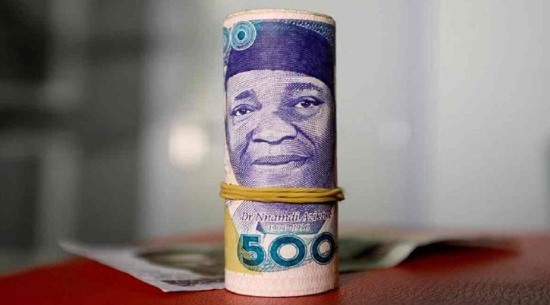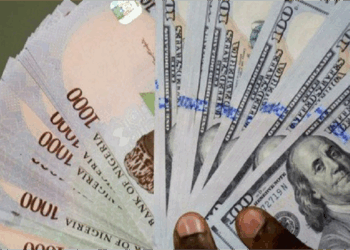The naira made a notable recovery in the official market on September 6, 2024, closing at N1,593.32/$1, marking a 2.89% rebound after three consecutive days of depreciation.
According to the latest data from the FMDQ, this recovery saw the naira bounce back below the N1,600/$1 threshold, offering some relief to the local currency market, following a turbulent week of currency volatility.
The recovery also coincided with the settlement of a $500 million domestic dollar bond to subscribed investors and an announcement by the Central Bank of Nigeria (CBN) to sell $20,000 to each Bureau De Change (BDC) operator in the country.
A week of lows for the naira
The significant recovery on September 6 followed three days of losses, which began on September 3 when the naira depreciated by 1.59% to close at N1,611.34/$1.
The depreciation continued on September 4 and 5, with the currency further weakening by 0.89% and 0.83%, respectively, closing at N1,625.88/$1 and N1,639.41/$1 over the two days.
While the closing rate on Wednesday was a six-month low, the closing rate on Thursday was a seven-month low, suggesting a turbulent week for the local currency.
On Friday, the naira traded at a high of N1,665/$1 and a low of N1,580/$1, indicating significant volatility in the foreign exchange market.
Forex turnover surge supports recovery
Alongside the appreciation of the naira, foreign exchange (forex) turnover on the same day surged by 31.96%, climbing to $245.17 million from $185.79 million on September 5.
- This notable increase in dollar supply on the Nigerian Autonomous Foreign Exchange Market (NAFEM) appears to have supported the currency’s rebound, with traders citing improved liquidity as a key factor in driving demand for the naira.
- However, the forex turnover data from the FMDQ reflects a highly volatile market.
- On September 2, 2024, turnover stood at just $71.18 million, representing a significant drop of 58.81% compared to the previous day’s figure. However, a day later on September 3, turnover rebounded sharply by 194.48%, reaching $209.61 million as market participants sought to capitalize on the naira’s depreciation.
- Turnover remained robust on September 4, albeit slightly lower at $205.76 million, a marginal decline of 1.84% from the previous day.
By September 5, liquidity constraints became apparent again as turnover fell to $185.79 million, a 9.71% drop. The renewed surge to $245.17 million on September 6 suggests a boost in dollar inflows, which likely contributed to the naira’s recovery.
What you should know
Nigeria’s $500 million domestic dollar bond offering had a settlement date scheduled for September 6, 2024.
The Federal Government of Nigeria issued the domestic dollar bond for subscription on August 19, 2024, with a 9.75% per annum interest rate.
- The bond is structured as a five-year investment, with coupon payments made semi-annually.
- Investors could purchase units at a minimum of $1,000 each, with an initial minimum subscription set at $10,000 (10 units). Subsequent investments could be made in multiples of $1,000.
- The Minister of Finance and Coordinating Minister of the Economy, Wale Edun, earlier said that the $500 million domestic dollar bond will enhance external reserves and help stabilize the foreign exchange situation in the country.
- However, the Debt Management Office (DMO) is yet to release the auction result for this domestic dollar bond.
- On Friday, the Central Bank of Nigeria (CBN) announced an approval of the sale of $20,000 each to Bureau De Change (BDC) operators at the rate of N1,580/$ in a bid to provide more forex liquidity in the market and meet demand.
- The CBN noted that BDCs are to sell to eligible end users at a margin, not above 1% of the purchase rate of N1,580/$.
- The naira’s movement below N1,600/$1 may signal a short-term stabilization, but with continued forex volatility and varying liquidity levels, market analysts warn that the naira may still face challenges in the coming days.
The fluctuations in forex turnover, ranging from as low as $71 million to over $245 million within the span of five days, highlight the ongoing uncertainty in Nigeria’s foreign exchange market.























